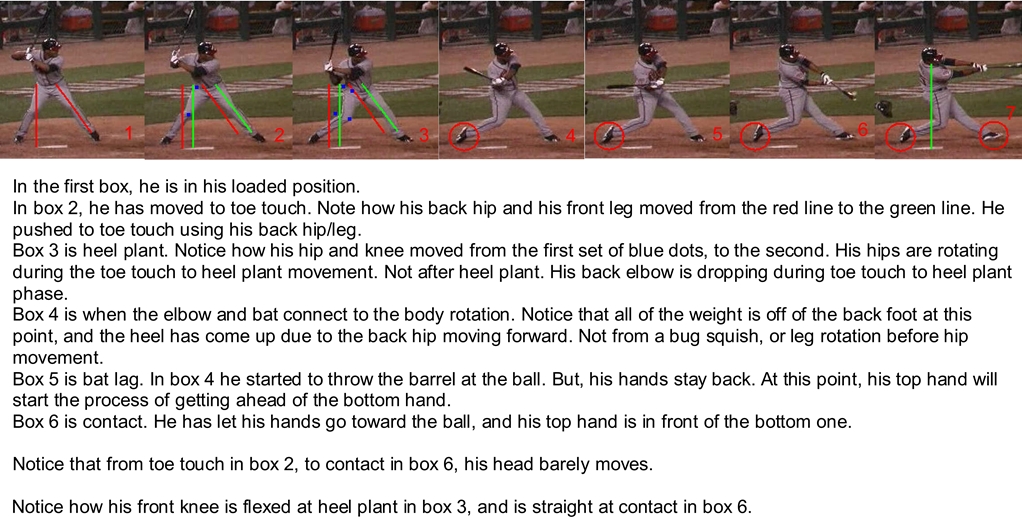I've been following MANY of the threads on these boards for several weeks now. I found a MILLION and ONE things I have been doing wrong in trying to improve my DD's swing. Just a quick background: She consistantly makes contact, and has excellent plate discipline, but she lacks any power or velocity in her swing. Hits all weak ground balls and infield pops.
I found the Megan 1 - Tee post incredibly helpful. I do however have a few questions regarding the conversation around sequence. I think that is where I need to start with her. I want to understand everything that needs to happen, and then we will break it down and work on it step by step. So here is my understanding of what takes place, please correct me if I am wrong. Going to bullet these for ease of reading. (Assuming Right handed hitter)
1. Balanced start with feet slightly wider than shoulder width. Flex in the knees and slight forward bend at the hips.
2. Pressure builds on the ball of the right foot as a result of a static rotation of the right leg causing the right butt cheek to move slightly to 6 O'Clock, assuming pitcher is at 9 O'clock.
3. Left foot lifts from the ground and begins to move toward footplant as the hands move toward 3 O'clock.
4. At left toe touch, the coil should be complete, hips and hands "fully loaded". (Do the hands continue toward 3 O'Clock as the hips begin to uncoil or do the hands and hips reach the full negative at the same time?)
5. The hips begin to rotate counter clockwise as the forward surge shifts the weight to the front leg, while maintaing a center of gravity over the inward bent right knee.
6. The right heel should not twist back toward 3 O'Clock but rather the push off the inside of the right foot should result in the toe pointing directly downward (no negative movement)
7. This is where I get very confused with the beginning of the hand movement. I know where they should be in the contact zone, but don't understand the begin of the forward motion. I have read criticism about being in a palm up/palm down position too far back in the swing, which is exactly what my DD does..
I appreciate any help the experienced swing analysts have to offer.
Thanks!!
I found the Megan 1 - Tee post incredibly helpful. I do however have a few questions regarding the conversation around sequence. I think that is where I need to start with her. I want to understand everything that needs to happen, and then we will break it down and work on it step by step. So here is my understanding of what takes place, please correct me if I am wrong. Going to bullet these for ease of reading. (Assuming Right handed hitter)
1. Balanced start with feet slightly wider than shoulder width. Flex in the knees and slight forward bend at the hips.
2. Pressure builds on the ball of the right foot as a result of a static rotation of the right leg causing the right butt cheek to move slightly to 6 O'Clock, assuming pitcher is at 9 O'clock.
3. Left foot lifts from the ground and begins to move toward footplant as the hands move toward 3 O'clock.
4. At left toe touch, the coil should be complete, hips and hands "fully loaded". (Do the hands continue toward 3 O'Clock as the hips begin to uncoil or do the hands and hips reach the full negative at the same time?)
5. The hips begin to rotate counter clockwise as the forward surge shifts the weight to the front leg, while maintaing a center of gravity over the inward bent right knee.
6. The right heel should not twist back toward 3 O'Clock but rather the push off the inside of the right foot should result in the toe pointing directly downward (no negative movement)
7. This is where I get very confused with the beginning of the hand movement. I know where they should be in the contact zone, but don't understand the begin of the forward motion. I have read criticism about being in a palm up/palm down position too far back in the swing, which is exactly what my DD does..
I appreciate any help the experienced swing analysts have to offer.
Thanks!!





